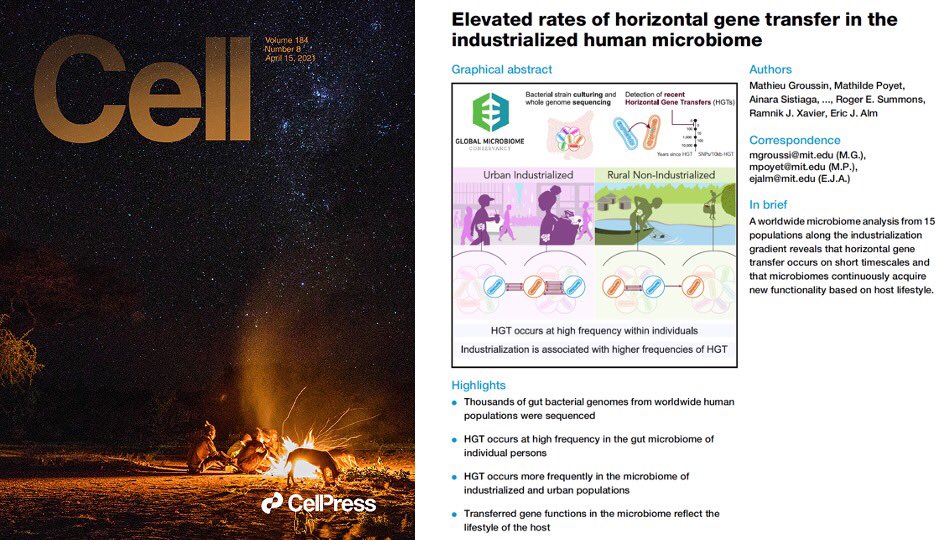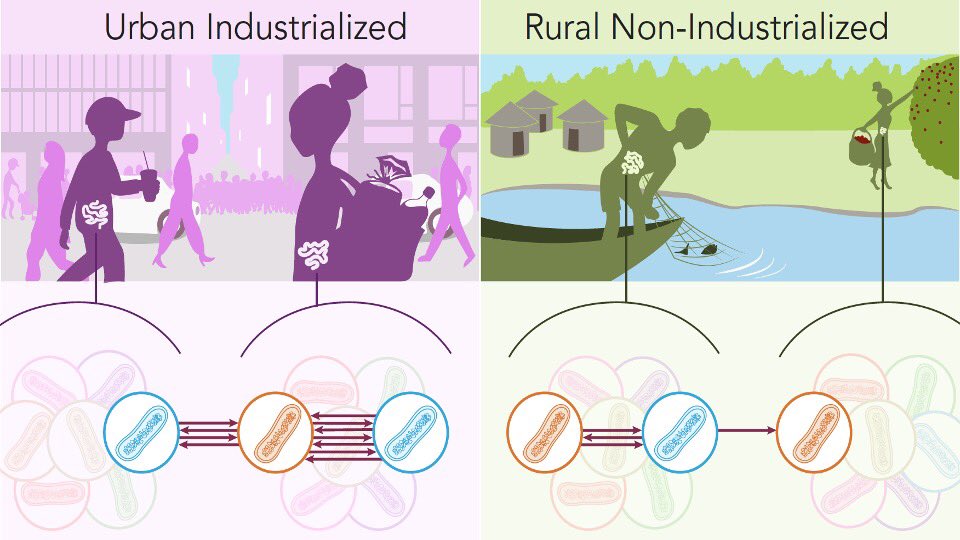
Thrilled to share a photo of mine made the cover of @CellCellPress! It’s a testament to the vital mission and fascinating research of the @globalmicrobiom... So, what does this image have to do with how your gut #microbiome evolves? Keep reading... #ConservingCultures 

The #microbiome is a hot topic in science, but the field has a major problem: we’re not seeing the full picture! Most studies only include participants from urban centers of industrialized nations – despite the fact that non-industrial lifestyles often host greater #biodiversity!
Without addressing this sampling bias in datasets and strain collections scientists can’t fully understand some of our most important and intimate connections with the microbial world. That’s where the @globalmicrobiom (GMbC) comes in...
microbiomeconservancy.org
microbiomeconservancy.org
The GMbC is creating a comprehensive collection of microbes reflecting the full diversity of the global human gut. They’re safeguarding threatened microbial #biodiversity and helping to ensure a more equitable future of microbiome-based medicine by improving global representation 

... and that’s how I found myself capturing this timeless scene of Hadza hunters under the stars in Tanzania. I’ve had the privilege of joining GMbC teams around the world to help document the scientific process and the people who make this important research possible. 

So what do these Hadza hunters have to do with how your gut microbiome evolves? The latest findings from the GMbC found that our lifestyles appear to impact not only the types of bacteria living inside of us, but also how these microbes are evolving!
cell.com/cell/pdf/S0092…
cell.com/cell/pdf/S0092…
They found that bacteria exchange bits of DNA with one another more often within people with urban & industrialized lifestyles. Furthermore, the genes being exchanged in these “horizontal gene transfers” have functions that appear to be associated with host lifestyles! 

For example, they found the bacteria within non-industrialized populations transfer more genes enabling these bugs to digest sugars. This makes sense because these communities tend to consume more nondigestible fiber (ex. baobab flour, below) which feeds bugs their microbiome. 

Similarly, they found the highest levels of antibiotic resistance genes were transferred within a Datoga community nearby in Tanzania. These pastoralists primarily raise cattle and frequently administer antibiotics to their herd, which they also rely on for much of their diet. 

Bottom line: your lifestyle affects how your microbiome evolves! 🤯 We’re still not sure why, but microbes within urban & industrialized hosts have the highest rates of gene transfers.
Given recent and dramatic global trends towards urbanization, rapidly changing lifestyles may also be dramatically changing how our microbiomes are evolving... and to what consequences? 

To address these questions & more, we urgently need to continue partnering with diverse communities all around the world, without whom none of these important insights would be possible. 

Importantly, these need to be true collaborations benefiting participants and local scientific collaborators to avoid extractive “parachute science”, which is especially true when working with often marginalized minority communities
microbiome.mit.edu/microbiome-new…
microbiome.mit.edu/microbiome-new…
That’s why the GMbC obtains free, prior and informed consent from participants, whom retain the exclusive rights to their donated materials and derivatives which can only be shared with third parties for non-commercial research purposes. 

Ultimately, the GMbC is preserving more than just endangered biodiversity; these bacterial cultures also represent human cultures. These microbes are a tangible byproduct - a living legacy - of distinct ways of life and shared evolutionary histories.
They also reflect our scientific values. With the next generation of microbial-based therapeutics on the horizon, it’s critical we understand the full diversity of the global human gut understand the healthy human microbiome and ensure the future of medicine benefits all. 

Still here? I’ll end by thanking some of the folks who supported this photojournalism project. From the beginning, despite all of the challenges, cofounders @mathildpoyet @mgroussi & @ejalm believed in the power of images enough to make space for me on sampling expeditions 

I’d also like to thank the Neil and Anna Rasmussen Family Foundation and the @USCBridge Art + Science Alliance for their generous support of the #ConservingCultures photojournalism project... and thank you for reading!
• • •
Missing some Tweet in this thread? You can try to
force a refresh


